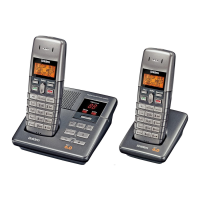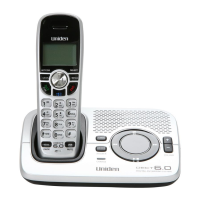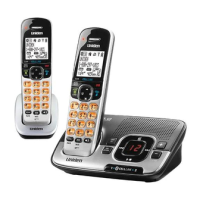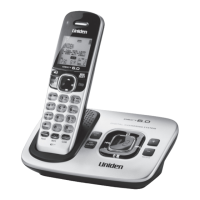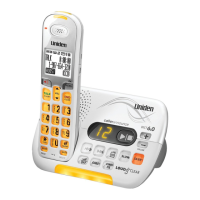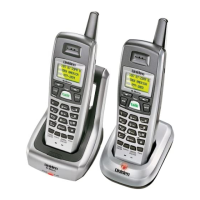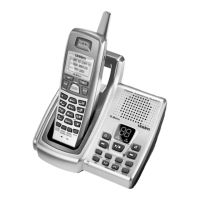Noise or Stac on the Line
Interference is the most
common cause of noise or
static on a cordless phone.
Here are some common
sources of interference:
electrical appliances,
especially microwave
ovens
computer equipment,
especially wireless LAN
equipment and DSL
modems
radio-based wireless
devices, such as room
monitors, wireless
controllers, or wireless headphones or speakers
fluorescent light fixtures (especially if giving off a buzzing noise)
other services that use your phone line, like alarm systems,
intercom systems, or broadband Internet service
If static is on 1 handset or in 1
location:
If static is on all handsets or in all
locations:
Check nearby for one of the -
common interference sources.
Try moving the handset away -
from a suspected source, or try
moving the suspected source so
it’s not between the handset and
the base.
There is always more noise at the -
edges of the base's range. If an
Out of Range message displays, try
moving closer to the base.
Check near the base for the -
source of interference.
Try moving the base away from -
a suspected source, or turn off
the source if possible.
If the base has an adjustable -
antenna, try raising the antenna
so it stands straight up.
If you have any service that uses -
the phone line, you might need
a filter (see below).
Do you use a T-Coil hearing aid?
If you have a hearing aid equipped
with a telecoil (T-coil) feature, the
interaction between the hearing aid
& digital cordless phones can cause
noise in the handset. If you have a T-
coil hearing aid & you have problems
with noise on the line, try turning on
T-coil
mode. Open the menu. Select
Handset Setup,
then select
T-coil
.
Using T-coil mode can shorten the
handset’s talk time; make sure to
watch the battery status and keep the
battery charged.
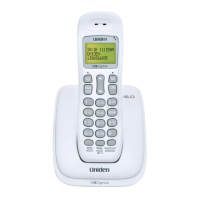
